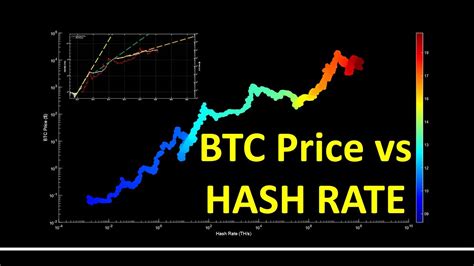Algebraic Relationship Between Hash Rate and Difficulty in Ethereum
Ethereum, one of the most widely used and influential blockchain platforms, has experienced rapid network growth. The increasing hash rate of the network can be attributed to several factors, such as increased mining power, better hardware, and optimized algorithms. However, there is an underlying relationship between the network’s Total Hash Rate (THR) and difficulty that affects the overall performance of the network. In this article, we will explore the algebraic relationship between THR and Ethereum difficulty.
What is Hash Rate?
Hash rate refers to the speed at which a miner’s computer can solve complex mathematical puzzles known as “blocks” within a given time. It represents the collective processing power of all the mining rigs on the network. Individual miners’ hash rates are measured in TH/s (trillion hashes per second), where 1 TRH = 1 billion TH/s.
What is difficulty?
Difficulty, also known as “mining difficulty,” is a measure of how difficult it is to solve a mathematical puzzle and validate a new block on the network. It represents the number of puzzles that must be solved before a miner can create a new block and receive the newly minted ETH tokens as a reward.
Relationship between THR and difficulty
The algebraic relationship between THR and difficulty can be expressed mathematically as:
THR = 1/ΔD
where THR is the overall hash rate of the network and ΔD is the change in mining difficulty. This equation shows that an increase in difficulty leads to a decrease in hash rate, assuming that power and processing efficiency are constant.
Mathematical Background
To better understand this relationship, let’s dive into some mathematical concepts:
- The number of possible solutions to a mathematical puzzle grows exponentially with the input size (in this case, 2^256 bytes).
- A lower mining difficulty requires more time to solve the puzzle and validate a new block.
- As the difficulty increases, there are fewer puzzles that can be solved in the same amount of time.
Factors Affecting Difficulty
The following factors affect the change in mining difficulty:
- Network Size

: As the network grows, it becomes more challenging for miners to solve puzzles and validate blocks.
- Hash Rates: Increased hash rates speed up block creation times and lower the difficulty.
- Hardware Efficiency: Hardware improvements can increase processing power and reduce difficulty.
- Algorithmic Changes: Changes to the Ethereum protocol or consensus algorithm can affect mining difficulty.
Conclusion
The algebraic relationship between THR and difficulty is a fundamental aspect of blockchain economics. As the network size increases, miners have to work harder to solve puzzles and validate blocks, resulting in a decrease in the hash rate. Understanding this relationship is crucial for investors, miners, and developers alike. By analyzing the mathematical relationships underlying ETH, we can gain insight into its potential growth path and make informed decisions about its future development.
References
- Ethereum (2022). Ethereum Hash Rate.
- Ethereum (2022). Difficulty Adjustment.
- Ethereum (2022). Mining Difficulty Calculator.

